Abstract
The effects of several variables on compositional response rate were investigated in three classrooms. After establishing baseline composition rates in each of the three classrooms, an experimental phase was introduced that consisted of: explicit timing of the children's composition period with a stopwatch, immediate feedback on the number of words each child produced, public posting of the greatest number of words written by each child to date, and instructions to try to exceed their highest score. In the second-grade classroom, these conditions were introduced, removed, and re-introduced. In two fifth-grade classrooms, these conditions were introduced according to a multiple baseline, across classes. In all cases, introduction of the experimental conditions led to a doubling of rate of words written by students and an increase in subjective quality ratings of compositions made by independent judges.
Full text
PDF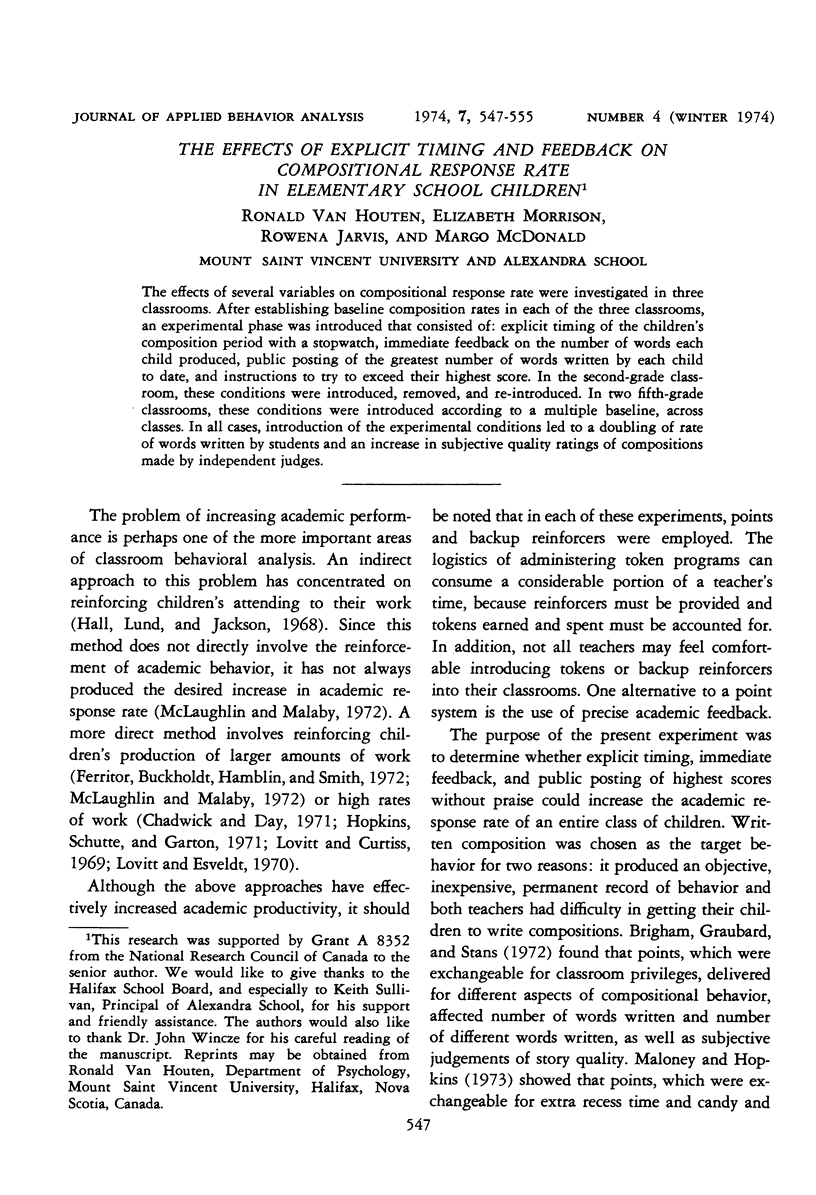
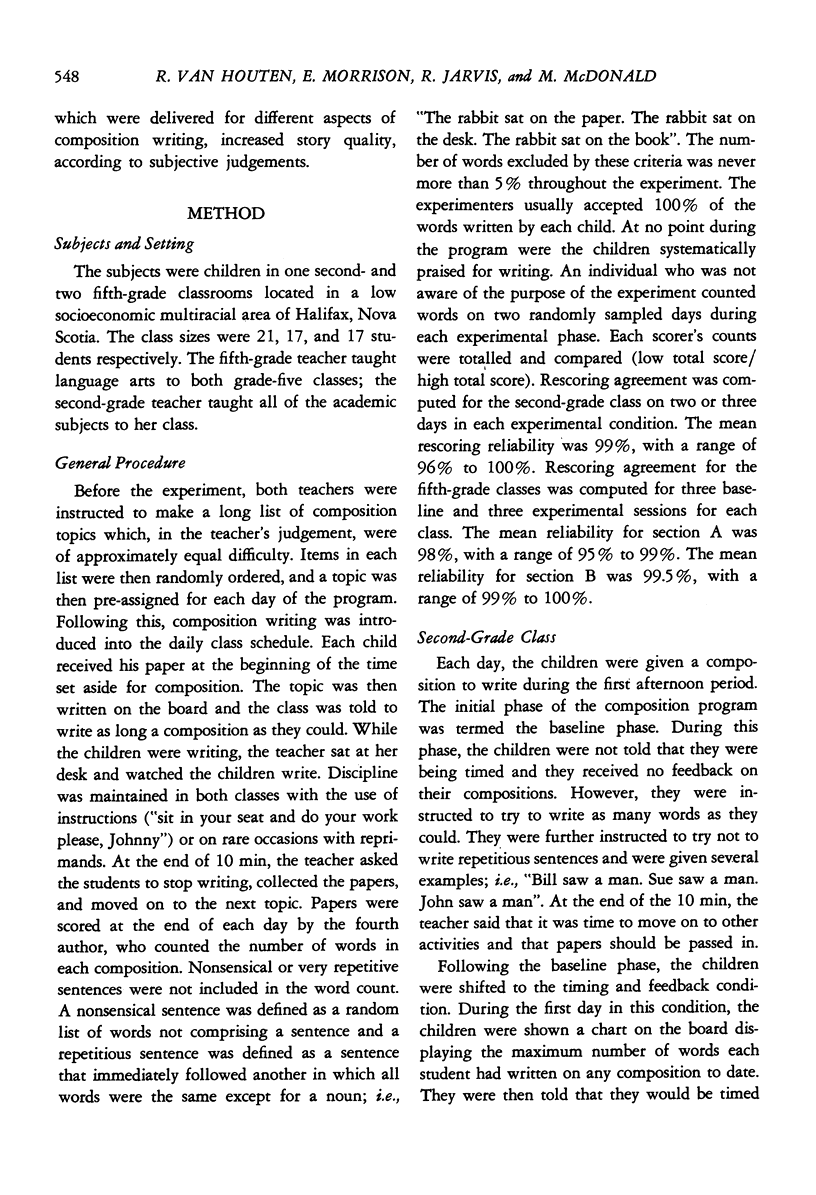
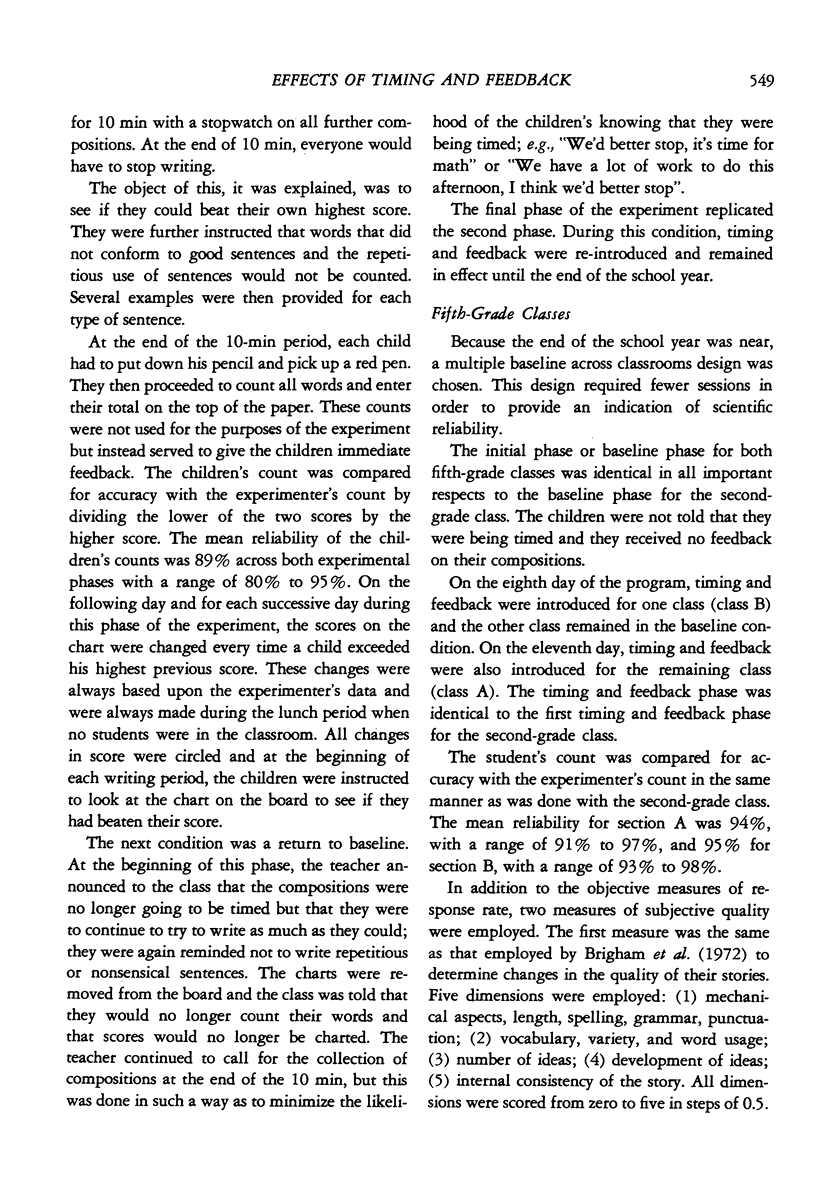

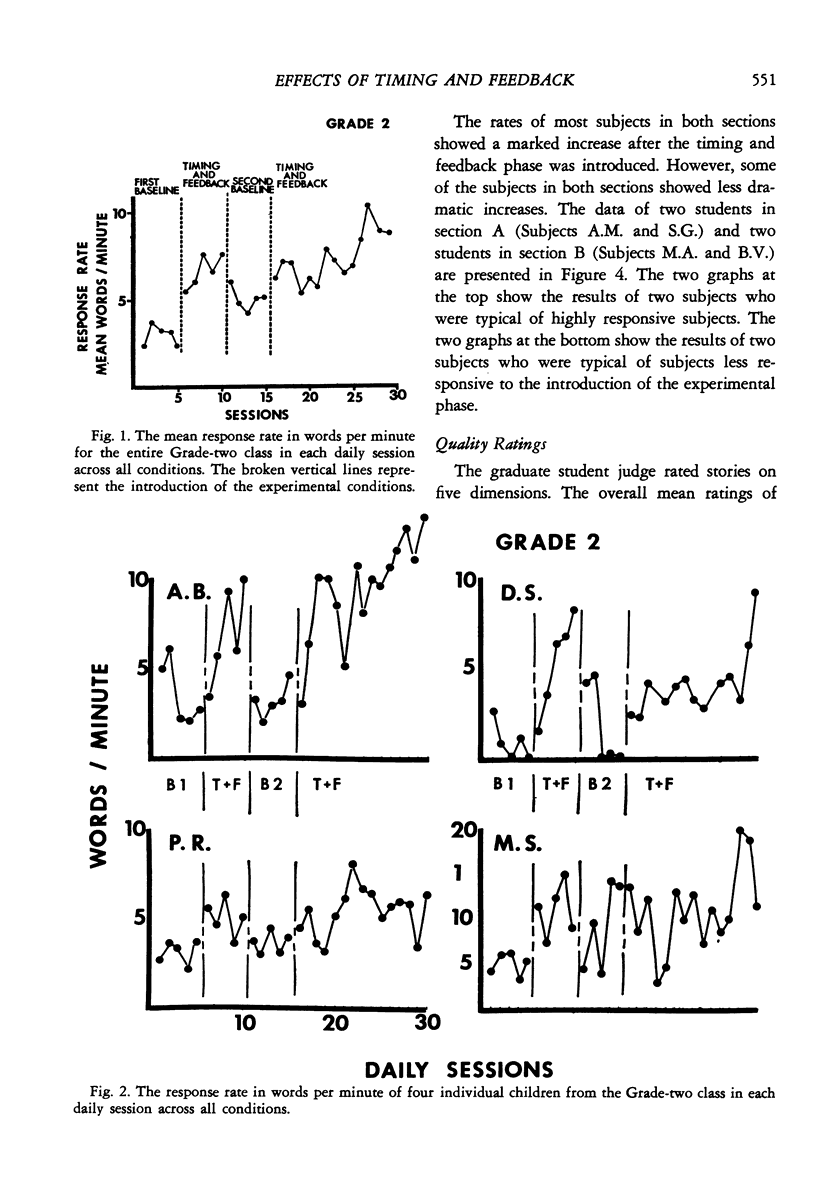
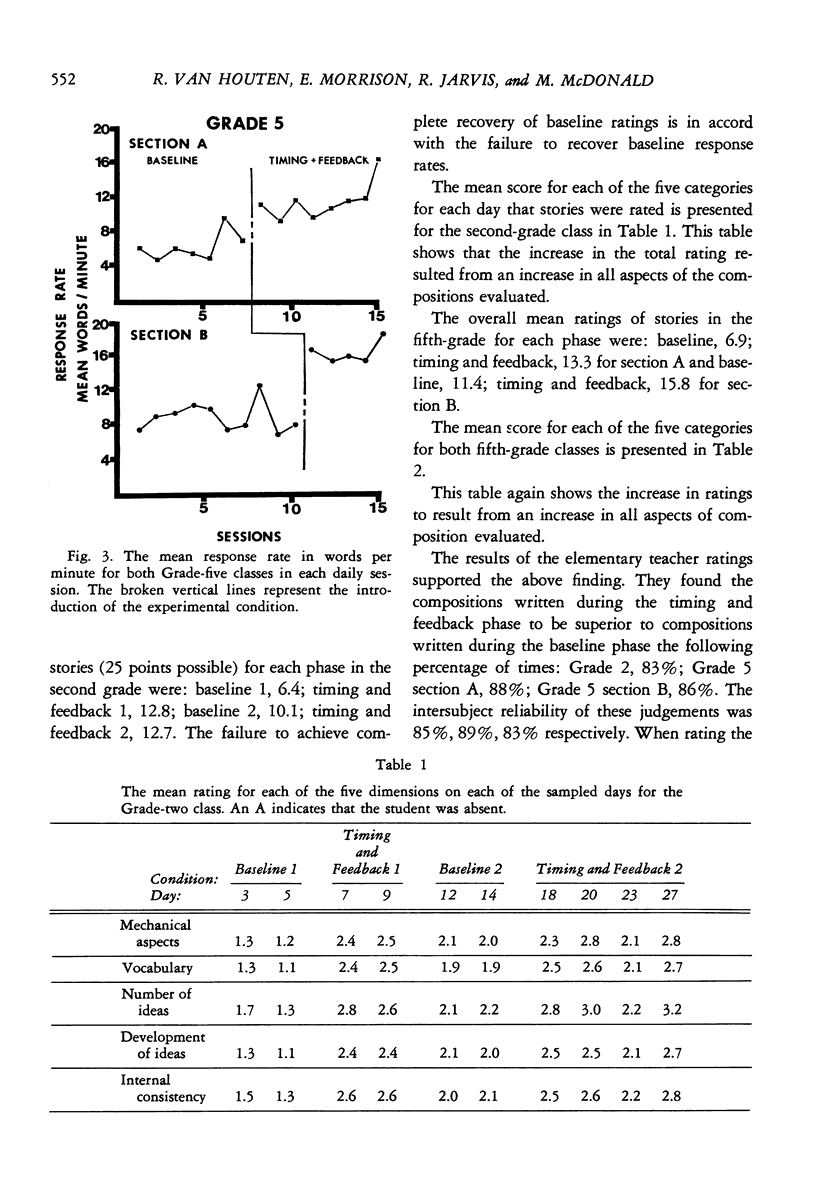

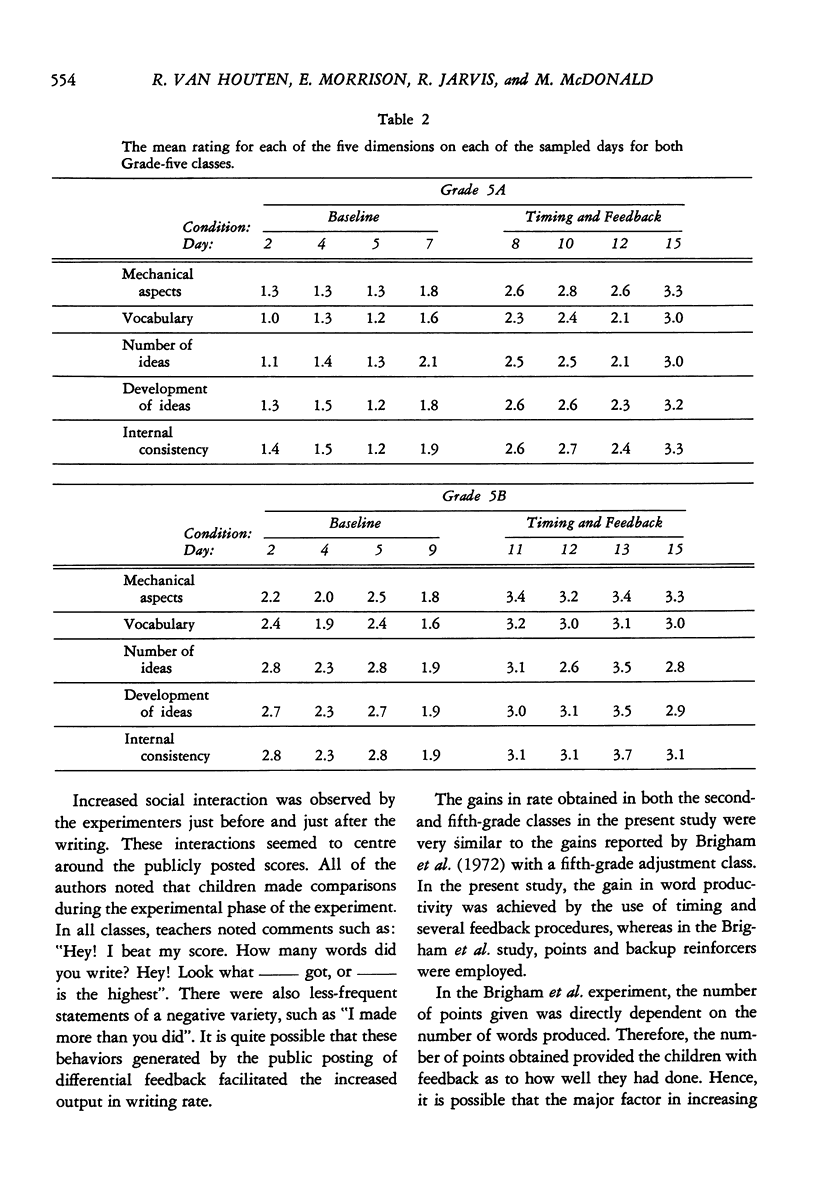
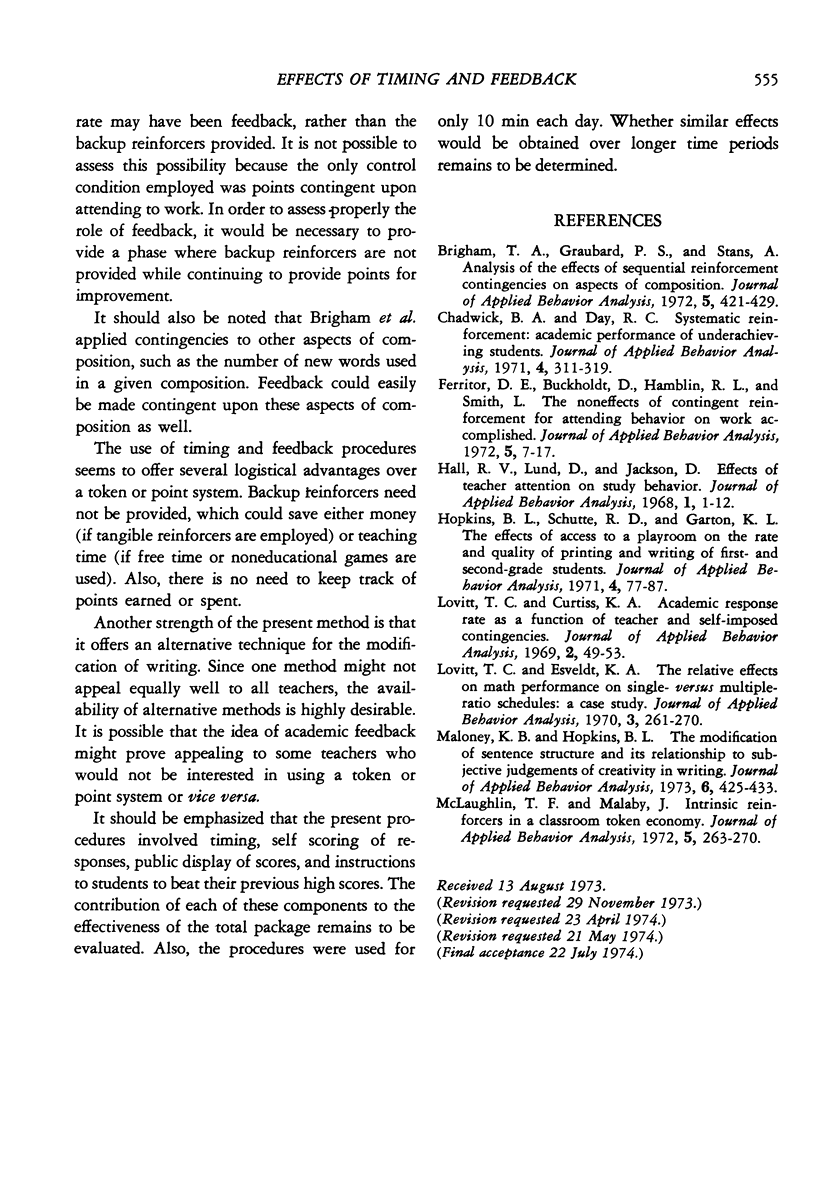
Selected References
These references are in PubMed. This may not be the complete list of references from this article.
- Brigham T. A., Graubard P. S., Stans A. Analysis of the effects of sequential reinforcement contingencies on aspects of composition. J Appl Behav Anal. 1972 Winter;5(4):421–429. doi: 10.1901/jaba.1972.5-421. [DOI] [PMC free article] [PubMed] [Google Scholar]
- Chadwick B. A., Day R. C. Systematic reinforcement: academic performance of underachieving students. J Appl Behav Anal. 1971 Winter;4(4):311–319. doi: 10.1901/jaba.1971.4-311. [DOI] [PMC free article] [PubMed] [Google Scholar]
- Ferritor D. E., Buckholdt D., Hamblin R. L., Smith L. The noneffects of contingent reinforcement for attending behavior on work accomplished. J Appl Behav Anal. 1972 Spring;5(1):7–17. doi: 10.1901/jaba.1972.5-7. [DOI] [PMC free article] [PubMed] [Google Scholar]
- Hall R. V., Lund D., Jackson D. Effects of teacher attention on study behavior. J Appl Behav Anal. 1968 Spring;1(1):1–12. doi: 10.1901/jaba.1968.1-1. [DOI] [PMC free article] [PubMed] [Google Scholar]
- Hopkins B. L., Schutte R. C., Garton K. L. The effects of access to a playroom on the rate and quality of printing and writing of first and second-grade students. J Appl Behav Anal. 1971 Summer;4(2):77–87. doi: 10.1901/jaba.1971.4-77. [DOI] [PMC free article] [PubMed] [Google Scholar]
- Lovitt T. C., Curtiss K. A. Academic response rate as a function of teacher- and self-imposed contingencies. J Appl Behav Anal. 1969 Spring;2(1):49–53. doi: 10.1901/jaba.1969.2-49. [DOI] [PMC free article] [PubMed] [Google Scholar]
- Lovitt T. C., Esveldt K. A. The relative effects on math performance of single- versus multiple-ratio schedules: a case study. J Appl Behav Anal. 1970 Winter;3(4):261–270. doi: 10.1901/jaba.1970.3-261. [DOI] [PMC free article] [PubMed] [Google Scholar]
- Maloney K. B., Hopkins B. L. The modification of sentence structure and its relationship to subjective judgements of creativity in writing. J Appl Behav Anal. 1973 Fall;6(3):425–433. doi: 10.1901/jaba.1973.6-425. [DOI] [PMC free article] [PubMed] [Google Scholar]
- McLaughlin T. F., Malaby J. Intrinsic reinforcers in a classroom token economy. J Appl Behav Anal. 1972 Fall;5(3):263–270. doi: 10.1901/jaba.1972.5-263. [DOI] [PMC free article] [PubMed] [Google Scholar]


